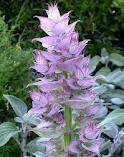Red dock is native to Europe although not to Italy Northern Asia . As its botanical name suggests it likes living on the edges of swampy ground and can be found in damp ditches and along margins of fields. It can grow up to 6 feet tall when it is in flower during July and August. As the English name says, it has red flowers and these give way in September to red-cased seeds. It is related to Rumex acetosella or sorrel and more distantly to rhubarb as they are all members of the Polygonaceae family of plants. It is also closely related to yellow or crispy dock and to the common dock (Rumex obtusifolia) which is the antidote to nettle stings.
 The leaves may be cooked and eaten as this will remove most of the oxalic acid present in them; they can be used like spinach, if necessary. However it is not advisable to ingest this plant if you suffer from rheumatism, gout or arthritis. An infusion of the whole plant can be used externally however on sores and ulcers to cleanse them. If taken internally this infusion is said to detoxify the body. The roots can be boiled and used as a poultice on rheumatic joints to alleviate the pain, and the powdered root has been used as toothpaste. The root has also been used in the treatment of mouth ulcers, as has the dock leaf R. obtusifolia.
The leaves may be cooked and eaten as this will remove most of the oxalic acid present in them; they can be used like spinach, if necessary. However it is not advisable to ingest this plant if you suffer from rheumatism, gout or arthritis. An infusion of the whole plant can be used externally however on sores and ulcers to cleanse them. If taken internally this infusion is said to detoxify the body. The roots can be boiled and used as a poultice on rheumatic joints to alleviate the pain, and the powdered root has been used as toothpaste. The root has also been used in the treatment of mouth ulcers, as has the dock leaf R. obtusifolia. The root can be harvested in spring when it is said to be at its most potent in medical terms, and dried for later use. The tannin in the plant makes it a useful astringent and can be used for diarrhoea and stomach upset, while the anthraquinones in the plant make it a good laxative, which is milder than senna and, of course jamalgota. If you take an overdose of the plant you will suffer nausea, stomach pains and gastric problems and perhaps dermatitis if used externally.
Culpeper recommended the red dock or bloodwort: -
 “All Docks are under Jupiter, of which the Red Dock, which is commonly called Bloodwort; cleanseth the blood and strengthens the liver.”
“All Docks are under Jupiter, of which the Red Dock, which is commonly called Bloodwort; cleanseth the blood and strengthens the liver.” He emphasizes this by ending his description of the docks by saying: -
“Bloodwort is exceeding strengthening to the liver, and procures good blood, being as wholesome a pot herb as any growing in a garden.”



















































